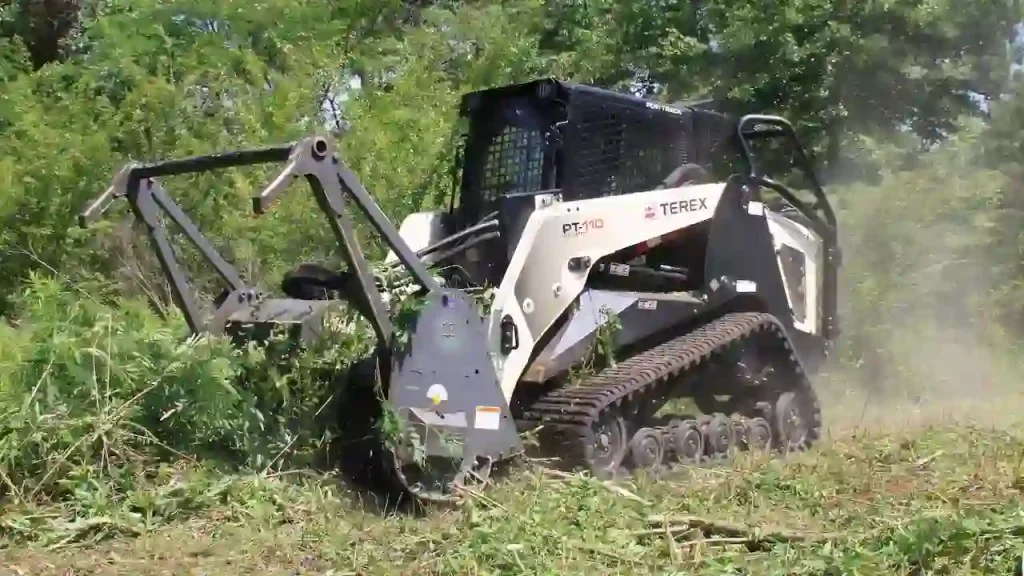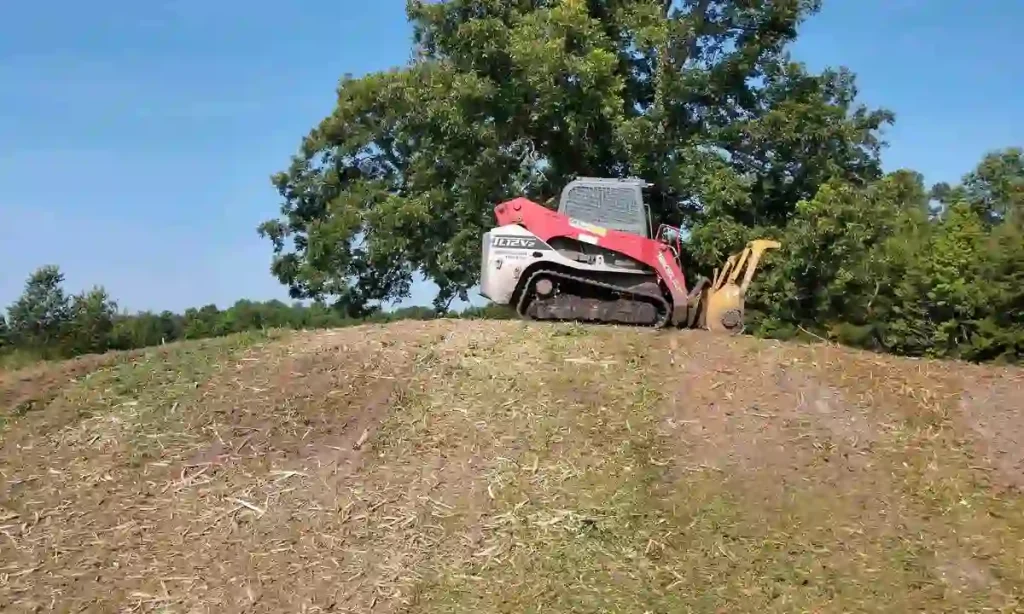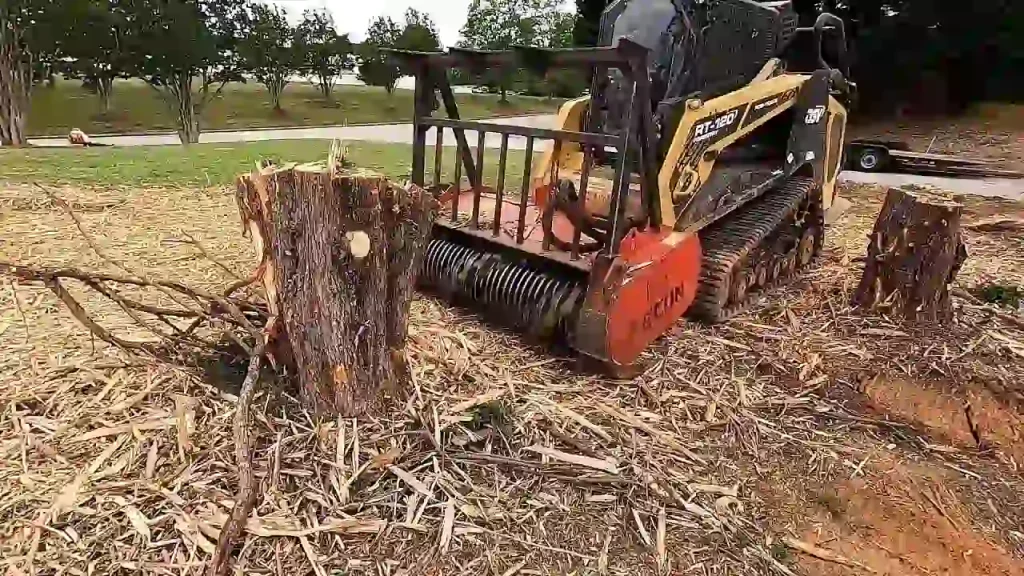Land clearing is an essential aspect of various industries, including agriculture, construction, and urban development. It involves the removal of trees, shrubs, and other vegetation to prepare the land for new purposes. In Missouri, a state known for its diverse landscapes and natural beauty, efficient land clearing techniques are crucial to balance development and environmental conservation. In recent years, revolutionary forestry mulching techniques have emerged as a game-changer in the field, offering sustainable and efficient solutions to land clearing challenges.
Traditional land clearing methods, such as manual labor and heavy machinery, often result in excessive soil disruption, erosion, and environmental damage. They are time-consuming, expensive, and can have long-term negative impacts on the land. Forestry mulching, on the other hand, provides an innovative approach that addresses these issues effectively.
Forestry mulching involves using specialized equipment, commonly known as forestry mulchers or mulching machines, to grind and shred vegetation into mulch. The mulch is then distributed evenly across the cleared area, providing numerous benefits to the land and environment. In this blog, Rightway Forestry will help in exploring some of the revolutionary forestry mulching techniques that are transforming land clearing practices in Missouri and the benefits it is contributing:

Low-Impact Equipment:
One of the key advantages of forestry mulching is its ability to minimize soil disturbance and environmental impact. Unlike traditional methods that involve heavy machinery, forestry mulchers are designed to operate with low ground pressure. They distribute the weight of the equipment evenly, reducing the risk of soil compaction and preserving the natural structure of the land.
Efficient Vegetation Removal:
Forestry mulchers are highly efficient at clearing dense vegetation. Equipped with strong cutting teeth and powerful mulching heads, these machines can shred trees, brush, and even small stumps into fine mulch. The mulch is left on-site, acting as a natural protective layer against erosion, retaining moisture, and improving soil health.
Enhanced Soil Health:
By adopting practices like leaving the mulch on the cleared land, forestry mulching not only reduces the environmental impact of land clearing but also contributes to the restoration and enhancement of soil health. The mulch acts as a natural fertilizer, adding organic matter to the soil and promoting nutrient cycling. It helps to improve soil structure, retain moisture, and reduce weed growth. Moreover, the decomposition of the mulch enriches the soil over time, creating a favorable environment for future plant growth.
Erosion Control:
One of the significant challenges associated with land clearing is erosion. Traditional methods often leave the land exposed, making it susceptible to erosion caused by wind and rain. Forestry mulching addresses this issue by creating a protective layer of mulch. The mulch acts as a barrier, reducing the impact of raindrops, preventing soil erosion, and promoting water infiltration. It also helps to regulate soil temperature and conserve moisture, further supporting plant growth and ecological restoration.
Cost and Time Efficiency:
Forestry mulching techniques offer cost and time-saving advantages over traditional land clearing methods. The mulching process is relatively quick, allowing for efficient clearance of large areas in a shorter time frame. Additionally, there is no need for hauling away debris or burning, reducing transportation costs and potential environmental hazards. The mulched material can be left on-site or used for other purposes, such as erosion control, composting, or biomass production, providing additional economic benefits.
Environmental Sustainability:
With growing awareness of environmental conservation, it is essential to adopt land clearing practices that prioritize sustainability, even in activities such as creating ATV trails. Forestry mulching aligns with these principles by minimizing the impact on natural resources. It reduces carbon emissions by avoiding the burning of vegetation and promotes the regeneration of native plant species. Furthermore, the mulch itself is a renewable resource that can be used in various applications, contributing to a circular economy approach.
Eco-Friendly Approach:
These techniques prioritize environmental sustainability by minimizing soil erosion and disturbance. Forestry mulching machines employ specialized mulching heads that delicately shred vegetation into mulch, leaving the topsoil largely undisturbed and promoting natural regeneration.
Selective Clearing:
One key aspect of these techniques is their ability to perform selective clearing. Instead of clearing large swaths of land indiscriminately, forestry mulching allows for precise targeting of specific vegetation, preserving desired trees and plants while removing unwanted growth.
Soil Erosion Prevention:
Forestry mulching techniques play a crucial role in preventing soil erosion. By leaving the topsoil intact and mulching vegetation directly on the ground, these methods help stabilize the soil, reduce runoff, and maintain soil structure, protecting valuable nutrients and preventing sedimentation in nearby water bodies.
Firebreak Creation:
In fire-prone regions of Missouri, the creation of firebreaks is crucial for preventing the spread of wildfires. Forestry mulching can effectively clear vegetation along designated firebreak lines, reducing fuel loads and creating a barrier to slow or halt the progress of wildfires. The mulched material left on-site acts as a natural fire retardant.
FAQS:
What is forestry mulching?
Forestry mulching is a land clearing technique that uses specialized equipment to grind vegetation and trees into fine mulch. It is an efficient and environmentally friendly method that promotes nutrient cycling and erosion control.
How does forestry mulching differ from traditional land clearing methods?
Traditional land clearing methods often involve bulldozers, excavators, and burning. Forestry mulching, on the other hand, uses mulchers or masticators to grind vegetation, resulting in fine mulch that can be left on-site. This method is faster, more cost-effective, and has minimal environmental impact compared to traditional methods.
Can the mulched material be used for other purposes?
Yes, the mulched material can have various uses. It can be left on-site to provide natural weed suppression and erosion control. Additionally, it can be utilized for composting, erosion control blankets, or biomass fuel production, depending on specific project requirements.
Are there any regulations or permits required for forestry mulching in Missouri?
Regulations and permit requirements may vary depending on the location and scale of the land clearing project. It is essential to consult with local authorities or environmental agencies to ensure compliance with any applicable regulations or permit requirements in Missouri.

Conclusion:
Forestry mulching techniques have revolutionized land clearing practices in Missouri, offering efficient, cost-effective, and environmentally friendly solutions. With its ability to quickly clear large areas while promoting soil health and minimizing environmental impact, forestry mulching has become a game-changer in the field of land clearing. The advantages of this technique, including increased efficiency, minimal disturbance to natural habitats, and versatility in handling various vegetation types, make it an ideal choice for agricultural expansion, residential and commercial development, wildlife habitat restoration, and firebreak creation in the state.
In conclusion, forestry mulching is a revolutionary approach to land clearing services in Missouri. It provides numerous benefits, such as efficiency, environmental friendliness, cost-effectiveness, and versatility, making it a preferred choice for various land clearing projects. By utilizing forestry mulching techniques, Missouri can achieve efficient and sustainable land clearing while preserving its natural resources for future generations.

